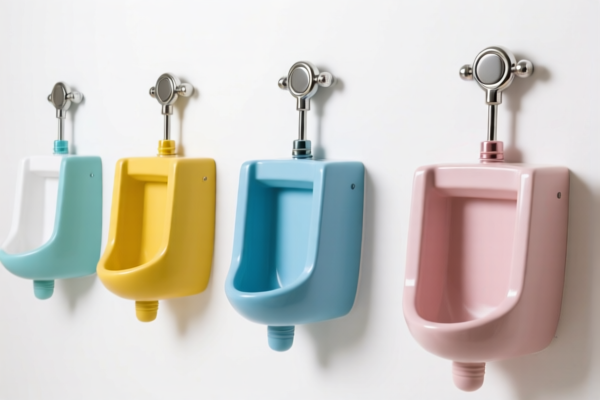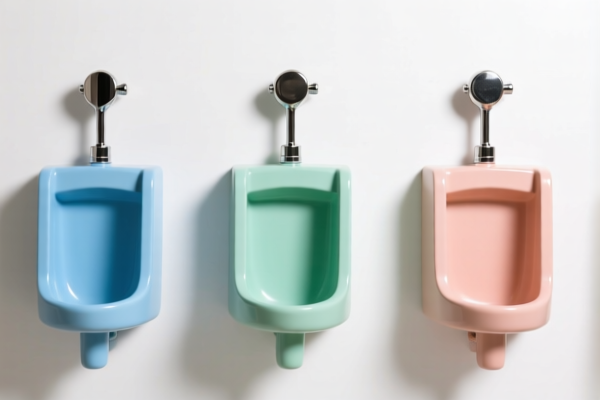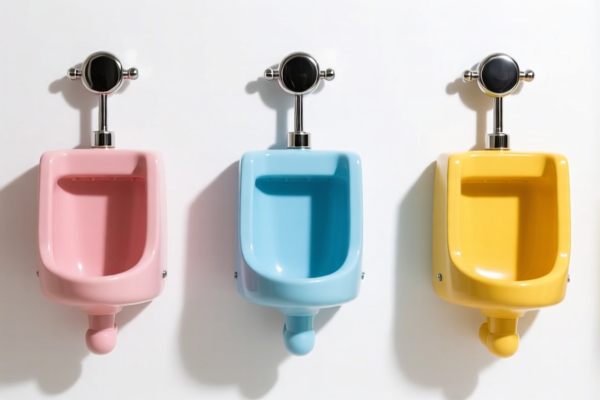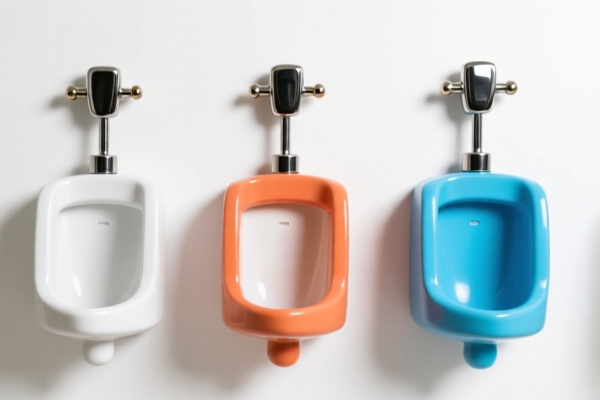| HS Code | Official Doc | Tariff Rate | Origin | Destination | Effective Date |
|---|---|---|---|---|---|
| 6910100005 | Doc | 35.8% | CN | US | 2025-05-12 |
| 8481801020 | Doc | 59.0% | CN | US | 2025-05-12 |
| 8481809010 | Doc | 57.0% | CN | US | 2025-05-12 |
| 3922900000 | Doc | 61.3% | CN | US | 2025-05-12 |
| 3926902100 | Doc | 41.7% | CN | US | 2025-05-12 |




Urinal
A urinal is a sanitary plumbing fixture designed for urination. Primarily used by males, urinals offer a convenient and often more hygienic alternative to toilets for standing or seated urination.
Material
Urinals are commonly constructed from:
- Porcelain: The most traditional and widespread material, known for its durability, ease of cleaning, and resistance to staining.
- Stainless Steel: Increasingly popular in high-traffic public restrooms, valued for its vandal resistance, durability, and modern aesthetic.
- Acrylic: A lighter-weight, less expensive option, often used in residential or lower-traffic settings.
- Composite Materials: Can offer a balance of durability, cost-effectiveness, and design flexibility.
Purpose
The primary purpose of a urinal is to provide a dedicated fixture for male urination, reducing the load on toilets and improving restroom hygiene. They are particularly useful in:
- Public Restrooms: Men's rooms in schools, stadiums, transportation hubs, and other public spaces.
- Commercial Buildings: Offices, factories, and other workplaces.
- Residential Settings: While less common, urinals can be installed in private residences, particularly for convenience or accessibility reasons.
Function
Urinals function by directing urine into a drainpipe, typically connected to a building's sewage system. Key functional components include:
- Basin: The main receptacle for urine. Designs vary in shape and size.
- Flush Valve: Automatically or manually activates a flush to remove urine and waste. Flush mechanisms include:
- Flushometer Valves: Use water pressure to create a powerful flush.
- Siphon Jet Valves: Utilize a siphon effect for flushing.
- Waterless Urinals: Employ a sealed trap and biological enzymes to break down urine and eliminate odors without water.
- Drain: Transports urine to the sewage system.
- Trap: A curved section of pipe that holds water to create a seal, preventing sewer gases from entering the restroom.
Usage Scenarios
- High-Traffic Restrooms: Urinals are essential in environments with a high volume of male users.
- Water Conservation: Waterless urinals significantly reduce water consumption.
- Accessibility: Some urinals are designed with features to accommodate users with disabilities.
- Hygiene: Reduces contact with surfaces compared to toilets.
Common Types
- Wall-Mounted Urinals: The most common type, installed directly on the wall.
- Floor-Mounted Urinals: Less common, but provide stability in certain installations.
- Waterless Urinals: Employ a sealed trap and biological enzymes, eliminating the need for flushing water.
- Infrared Sensor Urinals: Automatically flush upon detection of a user.
- Stall Urinals: Integrated into restroom stalls for privacy.
- Trough Urinals: Long, communal urinals often found in high-volume public restrooms (becoming less common due to hygiene concerns).
- Ceramic vs. Stainless Steel: Distinguishes material composition and aesthetic.
Urinals are sanitary fixtures typically constructed of porcelain or china, designed for male urination. They fall under the classification of water closet bowls and similar sanitary fixtures.
Here are the relevant HS codes based on the provided reference material:
-
6910.10.0005: This HS code covers ceramic sinks, washbasins, washbasin pedestals, baths, bidets, water closet bowls, flush tanks, urinals and similar sanitary fixtures, specifically those of porcelain or china. It further specifies water closet bowls, flushometer type.
- 69: Chapter 69 relates to ceramic products.
- 10: Heading 6910 covers ceramic sinks, washbasins, baths, and similar sanitary fixtures.
- 0005: This subheading specifically identifies water closet bowls, flushometer type, made of porcelain or china. The current total tax rate is 35.8%.
-
3922.90.0000: This HS code covers baths, shower baths, sinks, washbasins, bidets, lavatory pans, seats and covers, flushing cisterns and similar sanitary ware, of plastics.
- 39: Chapter 39 relates to plastics and articles thereof.
- 22: Heading 3922 covers sanitary ware of plastics.
- 900000: This subheading covers other sanitary ware of plastics. The current total tax rate is 61.3%.
Regarding HS code 6910.10.0005, it is important to note that the goods must be made of porcelain or china to fall under this classification. If the urinal is constructed of plastic, HS code 3922.90.0000 would be more appropriate.
Customer Reviews
No reviews yet.